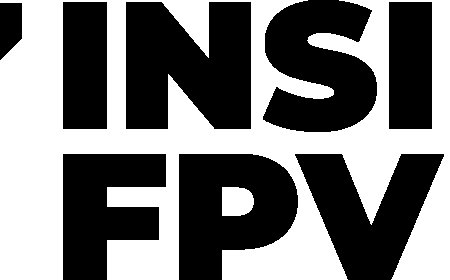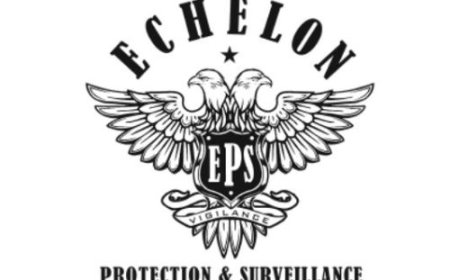How EHRs Improve Healthcare & Revenue Cycle Management in 2025
Discover how modern EHR systems boost care quality, improve billing accuracy, support HIPAA compliance, and transform your revenue cycle in 2025.

Imagine trying to deliver high-quality care while relying on handwritten charts that live in dusty filing cabinets, prone to loss and errors. For decades, this was the reality in many healthcare settings. Thankfully, times have changed.Electronic Health Records (EHRs) are now the backbone of modern healthcarecentralizing patient data, enhancing clinical decision-making, and powering everything from medical billing services to HIPAA-compliant workflows.
However, adopting an EHR isnt enough. Many organizations still struggle to leverage these systems for maximum efficiency and revenue growth. In this comprehensive guide, well break down why EHRs are indispensable, how they improve revenue cycle management, and what steps can help your practice avoid the common pitfallseven those that affect seasoned providers.
What Exactly Is an EHR?
At their simplest, EHRs are secure, digital systems that store and organize a patients health information over time. Unlike old-fashioned paper recordsor even basic electronic medical records (EMRs)EHRs are designed to:
- Integrate data across the care continuum.
- Allow authorized users to access, update, and share information in real time.
- Support billing, reporting, and compliance workflows seamlessly.
An EHR typically includes:
- Demographics and insurance information
- Full medical and surgical history
- Medications and known allergies
- Lab results and imaging reports
- Immunizations and preventive care records
- Visit summaries and treatment plans
- Billing and payment data
Because all this information lives in one place, EHRs reduce fragmentation and help providers make better decisions.
Why EHRs Matter: Top Benefits
Whether youre a solo practitioner or part of a large health system, EHRs bring measurable advantages. Lets look at some of the most important.
1. A Single Source of Truth
In the past, patient information often lived in separate files: labs in one folder, billing in another, specialist reports somewhere else. EHRs solve this problem by consolidating everything.
How it helps:
- Reduces duplicate tests and procedures
- Provides a comprehensive view of patient history
- Makes it easier to spot trends and manage chronic conditions
- Streamlines documentation for accurate billing
2. Real-Time Data Sharing
One of the hallmarks of a true EHR is interoperability, meaning the system can exchange data securely across care teams and organizations. For example:
- A primary care doctor can see updates from a cardiologist visit.
- An emergency department physician can access a patients medications immediately.
- Billing teams can pull charges and codes without re-entering information.
This connectivity speeds up care and reduces errors.
3. Improved Accuracy and Compliance
EHRs include built-in tools to help clinicians and administrators stay compliant:
- Automatic reminders for preventive care and follow-up
- Alerts for drug interactions or allergies
- Templates to standardize documentation
- Role-based access controls and audit trails to protect privacy
When it comes to billing and coding, detailed records help ensure every claim is complete and accurate.
4. Better Patient Engagement
Todays patients expect transparency and digital convenience. EHRs deliver through secure portals where people can:
- Review lab results and notes
- Request prescription refills
- Schedule appointments
- Message their care team
- Pay bills online
This level of access increases satisfaction and often leads to better adherence to care plans.
Financial Impact: EHRs and Revenue Cycle Management
While EHRs are clinical systems at heart, their effect on the revenue cycle is profound. Heres why:
Accurate Documentation Supports Proper Coding
Incomplete or inconsistent documentation is a major cause of denials and underpayments. With an EHR:
- Every visit and procedure is logged in detail.
- Coding teams can access supporting notes easily.
- Claims reflect the true complexity of services provided.
This means fewer errors, faster payments, and stronger audit readiness.
Automation Reduces Administrative Overhead
Manually entering charges and billing data is time-consuming. Integrated EHRs:
- Generate claims automatically after encounters
- Validate claims before submission
- Submit claims electronically
- Flag missing information proactively
This automation helps billing teams focus on higher-value tasks, like denial management.
Analytics Drive Improvement
EHR data isnt just for clinical use. Practices can track key financial indicators, such as:
- Denial rates by payer or claim type
- Average days in accounts receivable
- Payment turnaround times
- Under-coding trends
These insights enable data-driven decisions to improve cash flow.
EHR Implementation: What Practices Should Know
Installing an EHR isnt simply a software upgradeits an organizational change. Successful rollouts require planning, training, and clear communication.
Common Challenges
- Data Migration: Moving records from legacy systems or paper charts can be tedious.
- User Adoption: Clinicians may resist change if the system feels unintuitive.
- Integration Gaps: Some EHRs dont talk well with billing software or labs.
- Workflow Disruption: New processes often require rethinking how work gets done.
Tips for Success
- Choose the Right Partner: Select an EHR vendor with strong implementation support and a reputation for usability.
- Engage Your Team Early: Involve clinicians, billers, and administrative staff in planning.
- Invest in Training: Hands-on practice is critical to build comfort and skill.
- Plan for Ongoing Optimization: Your workflows will evolveschedule regular reviews and updates.
Small Practice? You Still Need a Strong EHR
Many independent clinics worry about cost and complexity. The good news is, modern cloud-based EHRs are:
- Affordable, with predictable subscription pricing
- Scalable to grow with your practice
- Equipped with built-in compliance tools
- Accessible anywhere, supporting telehealth and hybrid care
Data Security: Protecting Your Patients and Your Practice
Cybersecurity threats are increasing. EHRs are built with safeguards, but practices must also do their part:
- Enforce strong password policies
- Limit access based on role
- Regularly update software and security patches
- Conduct periodic risk assessments
- Educate staff on phishing and other threats
Maintaining HIPAA compliance is essential for protecting your reputation and avoiding costly fines.
Harnessing EHR Data for Better Outcomes
One of the most exciting aspects of EHRs is their potential to drive improvements. With the right analytics tools, practices can:
- Identify patients due for preventive screenings
- Track chronic disease management metrics
- Compare clinician performance
- Discover revenue leakage and denial trends
Data turns routine record-keeping into actionable insight.
The Role of Artificial Intelligence in EHRs
AI is no longer just a buzzwordits already embedded in many leading EHR platforms:
- Smart coding suggestions reduce errors.
- Predictive analytics identify claims likely to be denied.
- Natural language processing transforms free-text notes into structured data.
- Clinical decision support offers treatment recommendations based on best practices.
These tools free up time and help clinicians focus on care.
Whats Next? The Future of EHRs
EHRs will continue to evolve. Here are some trends to watch:
- Voice-activated documentation to speed up note-taking
- Deeper integration with remote monitoring devices
- Expanded patient access to their full record
- Real-time insurance verification and prior authorization
- Personalized, data-driven care pathways
Practices that stay ahead of these trends will be better positioned to deliver exceptional care and maintain healthy revenue.
Final Thoughts: Getting the Most from Your EHR
Electronic Health Records are more than a compliance requirement. When implemented thoughtfully, they are:
- A clinical tool for better, safer care
- A financial engine to drive accurate billing
- A communication platform to engage patients
- A strategic asset that helps you compete and grow
But like any tool, an EHRs value depends on how you use it. The key is to partner with experts who can guide your implementation, optimize your workflows, and help you unlock the full benefits.
Ready to See Whats Possible?
AcerHealth has helped practices of all sizes integrate EHRs with revenue cycle management, compliance support, and data analytics. Whether youre upgrading an outdated system or starting fresh, our team can:
- Simplify the transition
- Train your staff
- Secure your data
- Streamline your revenue cycle
Explore our solutions and request a free consultation at AcerHealth.com.




































